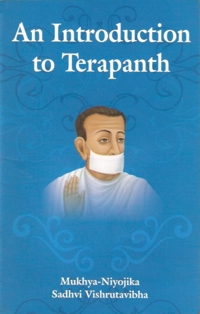
Preface
In the present age of management expertise, when there is boom of management mantras in the corporate field, would it not be surprising to know that Acharya Bhikshu, who was the founder of the great organization of Terapanth, formulated, nearly two and a half centuries ago, the powerful rules and regulations very much akin to the modern management theories?
During that period, people were unaware of the modern theories of ‘management’, yet Acharya Bhikshu implemented some of the best management practices in the Terapanth Organisation, which are now followed by the leading organizations of the world.
How did these ideas come to his mind? He had developed his intuition power to great heights and by doing so he was able to constitute the principles of great futuristic value.
Acharya Bhikshu was one of the first Gurus of management. A good leader is one:
- Who creates confidence in his team.
- Who generates faith towards the goal in his group.
- Who brings about positive changes in his followers and implements the changes after taking them into his confidence.
- Who uses his power to punish as well as to reward.
In this context when I look at the life of Acharya Bhikshu, I feel that he was really a great leader.
I have tried my best to introduce the Terapanth Organisation to the readers. Prior to the second edition of this book, my book titled ‘An Introduction to Jainism’ has been published. I aspire to write introductory books on other topics such as Preksha Meditation.
I am obliged to Acharya Shri Mahaprajnaji for motivating me to write on this topic and providing his blessings for the same. I am also very grateful to Muni Sri Mahendra Kumarji, who not only has edited this book, but has made some valuable suggestions to make it more useful.
I sincerely hope that my effort to introduce the Terapanth organization to the readers would prove beneficial for them.
Sadhvi Vishrutavibha
20th October, 2007
Udaipur
Prelude
India has always been a land of spiritual sages, and it continues to be so even today. The Indian culture reflects an ideal of renunciation and penance, and the Jain religion is one of the best examples of this. There have been twenty-four Tirthankaras in the Jain tradition, among which Lord Rishabha is the first and Lord Mahavira the last. For six centuries after Lord Mahavira had attained liberation which is the ultimate aim of Jainism, the Jain religious community remained undivided. However, in the 2nd century A.D., it split into two main branches, namely, the Shvetambaras and Digambaras. Later on, the Digambara tradition gave birth to some sub-branches, such as the Bispantha, Terapantha and Taranapantha and the Shvetambara tradition was further divided into several sects such as, the Murtipujaka, Sthanakvasi and Terapantha. In the Murtipujaka tradition, one finds several Gacchas (e.g. Khataragaccha, Tapagaccha etc.). Likewise, there are many sects and sub-sects in the Sthanakvasi tradition. The venerable Raghunathaji was the Acharya of one such Sthanakvasi sects and is worth mentioning, for Acharya Bhikshu (or Bhikshu Swami), the founder of Terapantha, was his disciple. Terapantha originated from the Sthanakvasi sect.
 Sadhvi Vishrut Vibha
Sadhvi Vishrut Vibha

